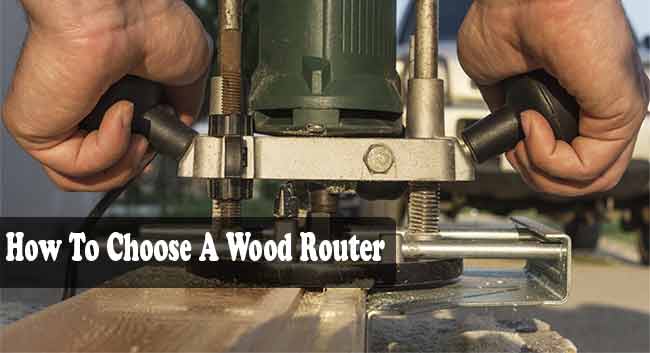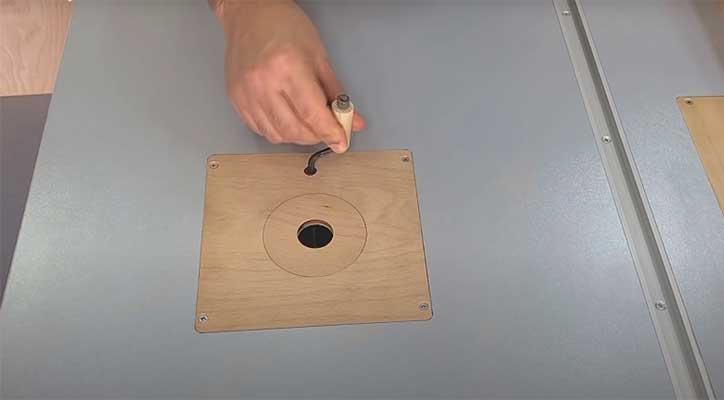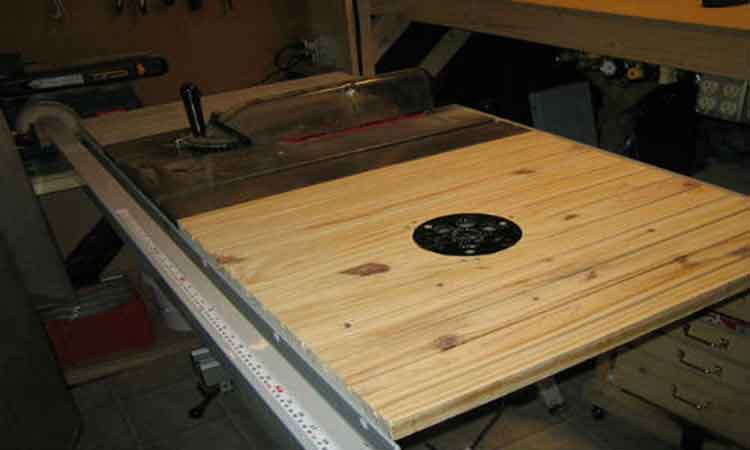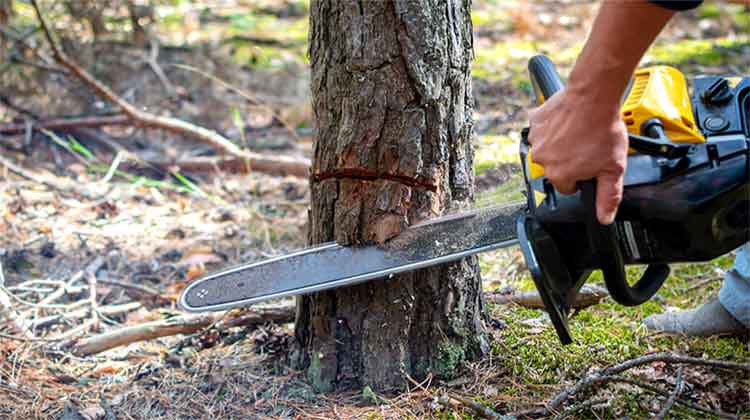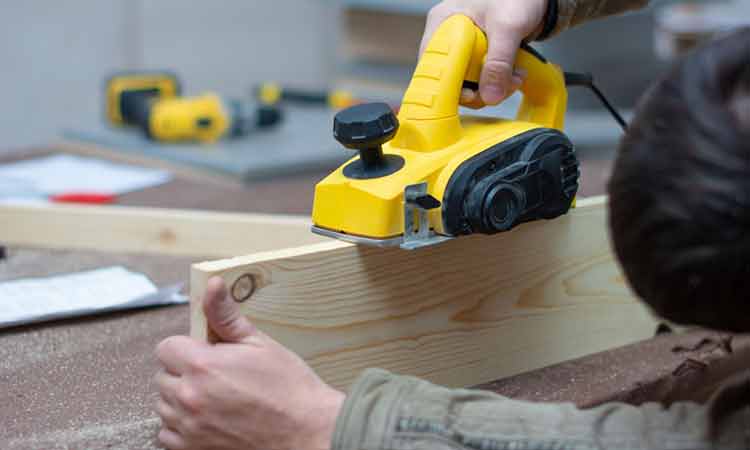Buying a wood router can be quite the challenge, and using a wood router can be even harder, especially if you do not know what you or doing or have never used one before. Choosing a wood router requires you to make several specific considerations, each of which will determine how happy you are with the purchase you make.
That is why we are here today, to give you a wood router buying guide. We want to give you all of the information available so you can make the right choice when buying a wood router. Keep on reading in order to find out how to choose a wood router for beginners.
Table of Contents
Types Of Wood Routers To Consider
The features of a wood router are not the only things to consider before making your purchase. There are a few different types of wood routers you can choose from, each of which has its own specific uses. What you are going to be doing with the wood router will determine which kind of wood router you buy.
1. Fixed Base Wood Routera
One common type of wood router is the fixed base wood router. This type of router is usually best used with a router table, but can also be used by hand. This type of wood router is fairly compact and quite easy to maneuver.
It is good for general purpose routing jobs as well as edge shaping. This type of wood router can handle both ¼ and ½ inch collets, it has 1 – ½ to 3 – ½ horsepower, and weigh anywhere from 7 to 11 pounds. A fixed base wood router needs to be manually adjusted every time you want to change the depth of the cut or the bit.
2. Plunge Base Router
A plunge base wood router has virtually the statistics as a fixed base model in terms of the horsepower, collet capacity, and weight, but where it really differs is with the base. A plunge base router is a very convenient tool because you can change the depth of your cut on the go, thus eliminating the need to interrupt your work for manual depth adjustments.
In other words, the base can plunge up and down as you do routing jobs. The router’s plunging base makes it great for things like through cuts, stopped dadoes, deep grooves, mortises, template and pattern work, sign making, engraving, and other interior cuts.
3. Laminate Or Trim Router
This is a smaller type of wood router to consider when you are choosing a new wood router. It only weighs around 4 pounds, making it a compact tool that is easy to maneuver and can be used with one hand to make precise cuts.
However a trim router only has between 3 – 6 amps of power and can only handle ¼ inch collets, which means that it is fine for smaller jobs such as the trimming and beveling of laminates, small detail work, and for crafters.
4. Interchangeable Base Router
This type of wood router tends to be a little more expensive than the rest, but they are also suitable for virtually any job you could throw at them. The motor on this type of wood router can have between 1 – ½ to 3 – ½ horsepower and it can usually only handle ½ inch collets. These wood routers are great because they can accommodate multiple bases and handle styles, and they are great for a wide variety of jobs.
5. CNC Router
CNC stands for computer numerical control and this type of router is precisely controlled by a computer. The user inputs the exact parameters of the cut that is to be made and the computer executes the instructions. These things tend to be really big so they aren’t exactly portable, but they sure are powerful.
In other words, besides some typing on a keyboard, there is no human contact with the machine itself. This is a highly mechanized type of router that is usually only found in factories or very big shops. CNC routers can be used for virtually any wood router job and any hard item such as composites, steel, plastics, and various other materials.
Wood Router Features To Look For
The features of a wood router are perhaps the most important thing to look out for before you make a purchase. The specific features it has will determine your wood router uses, what it can and can’t do, and how well it works for you. Here are some of the most important things to look for before buying a wood router.
1. A Spindle Lock
One wood router accessory to look out for is a spindle lock. Many wood requires require the use of two wrenches in order to change the router bit. One wrench is needed to hold the motor shaft, and the other is needed to loosen the collet that holds the router bit in place.
A spindle lock is very useful because it is a spring loaded pin that you press in order to hold the motor shaft in place. This means that you only need one wrench to loosen the collet. This makes removing and changing different router bits much easier than with the classic two wrench method.
2. EFC or Electronic Feedback Circuitry
Another important wood router feature to look for when buying a wood router is if it has electronic feedback circuitry. When a wood router has electronic feedback circuitry it can measure the amount of load that is put on the motor based on how hard it is working to get through a certain object.
This feedback will then adjust the torque that the motor provides to the router bit. The result is that when you are using your wood router for light jobs it will decrease its torque or power output, and when you are doing harder jobs it will increase power output. The ultimate effect is that it never feels like the router is changing its power output; it always feels the same.
3. Variable Speed Controls
The next thing to look out for when choosing a wood router is if it has variable speeds. Most modern larger sized router will have this feature. If you use the same router for all of your bits, this is definitely something that you want to look for in a good wood router.
This is because larger wood router bits work the best when they are moving at medium to slow speeds, and smaller wood router bits work better at high speeds. The point is that with a variable speed router, you can easily use all of your wood router bits in order to make clean and precise cuts.
4. Soft Start Feature
Yet another thing that is quite important for your wood router to have is a soft start feature. This feature means that your wood router will slowly work up to speed instead of being at full speed the second you turn it on.
When a wood router does not have a soft start feature it may cause the router to jerk around in your hands when you turn it on, which can result in you dropping the tool and also in unclean cuts. This is definitely a feature that you need to look for because it will provide you with much more precision and ease of wood router use.
5. Making Adjustments Above The Table
Another important wood router feature to look for, especially when you use a router table, is the ability to adjust the cutting depth from on top of the wood router table with a handle or crank. This is great because it means not having to get under the router table to make adjustments.
On that same note, a wood router collect that extends above the table is also ideal for changing wood router bits without having to remover the router from the wood router table.
6. A Vacuum Port
The next thing to look out for when choosing a wood router is that it has a vacuum port. A vacuum port and a sawdust collection system are both good wood router accessories to have. They will make cleaning up your workspace much easier, plus they also allow the router to function better by removing the obstacle that is excess sawdust.
Summary
As you can see, there is a lot of consideration that has to be put into choosing a wood router. This can make buying a wood router somewhat difficult. However if you follow the advice provided in this wood router buying guide and keep your own needs in mind, you should end up being happy with your purchase.

